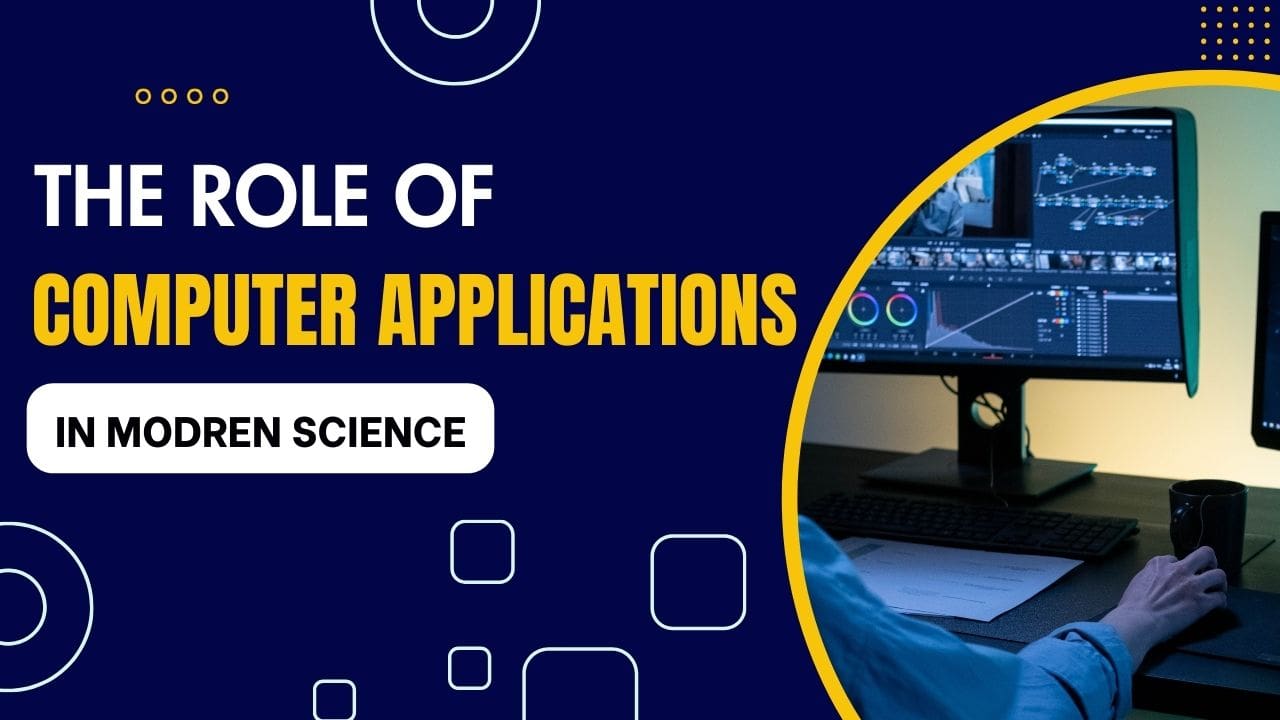
Welcome to another insightful blog post brought to you by PIMT. In today’s fast-paced and ever-evolving world, the integration of computer applications has become an integral part of various industries. From healthcare to finance, technology has revolutionized the way we approach and solve complex problems. In this blog post, we will delve into the role of computer applications in modern science, exploring the numerous ways in which they have transformed the landscape of scientific research and discovery. So, please grab a cup of coffee and join us as we embark on this exciting journey into the world of computer applications in modern science. Stay tuned for an enlightening exploration ahead.
Roles of Computer Applications in Modern Science
Here, we explore the intertwined relationship between computer applications and modern science, showcasing technology’s pivotal impact on diverse scientific domains.
1. Bioinformatics
Bioinformatics merges biology with computer applications, emphasizing the roles of MCA in modern biology. Through algorithms, databases, and statistical models, bioinformaticians analyze vast biological datasets like DNA sequences and protein structures. Such computer-aided insights lead to an enriched understanding of biological processes, gene function predictions, and the development of innovative therapies.
2. Systems Biology
Systems biology, emphasizing the interactions within biological systems, highlights the roles of MCA in modern science. Through computer applications, experimental data merge with mathematical models, facilitating the simulation and prediction of biological behaviours. This integration unravels complex networks like cell signalling, metabolic pathways, and gene regulation, showcasing the profound computer influence in decoding intricate biological processes.
3. Data Analysis
In the age of genomics and proteomics, we’re swamped with vast amounts of data, from sequencing genomes to mapping protein interactions. Computers, highlighting the roles of computer application in modern science, are now essential tools. They simplify the daunting task of sifting through this data, allowing researchers to easily spot patterns, unusual findings, and important insights that would be challenging to identify without their assistance.
4. Genome Sequencing
The task of genome sequencing has changed dramatically. What once took years and billions is now done quickly and affordably. The roles in MCA in modern biology are evident as computers, combined with modern sequencing tools, swiftly decode DNA. This rapid advancement aids in creating personalized medicines, studying evolution, and uncovering the genetic roots of many diseases.
5. Molecular Modeling
Computers give us a glimpse into the tiny world of molecules. By creating 3D models, scientists can see details like a protein’s shape or where a drug attaches. These views are vital for making new drugs, grasping molecular roles, and guessing how molecules act in varied conditions. The roles in MCA in modern science shine brightly in these advancements, simplifying complex molecular insights.
6. Simulation & Prediction
Biological systems can be puzzling. Yet, with computational tools, we can imitate processes or whole ecosystems, like predicting virus spreads or the impact of a gene change. Computer simulations let us test ideas virtually, saving time and resources before actual experiments. The roles in MCA in modern biology are evident, making research more efficient and precise by allowing virtual explorations before real-world tests.
7. Systems Biology
Computers give a broader perspective on biology. Rather than focusing on a single gene or protein, they allow the study of entire systems. Researchers can see how parts connect and affect each other. This ‘big picture’ view is essential to grasp concepts like gene cooperation in pathways or the ripple effects of system disturbances. Clearly, the roles of MCA in modern science are pivotal in achieving this comprehensive understanding.
8. Drug Discovery
Discovering new drugs is a complex task. Computers, showcasing the roles of computer application in modern science, simulate interactions between numerous compounds and target proteins. This ‘virtual screening’ pinpoints potential drug candidates, streamlining the later stages of drug development. By doing so, computers make the search for the next breakthrough medicine both faster and more efficient.
9. Evolutionary Biology & Phylogenetics
Tracing the tree of life and species’ evolutionary ties is immense. The roles of MCA in modern biology shine as computers speedily compare genetic data across different species. This quick comparison aids in building evolutionary trees, offering insights into how species have transformed over the ages. Computers, thus, simplify our quest to understand life’s intricate evolutionary web.
10. Environmental Modeling
Computers, highlighting the roles of computer applications in modern science, help anticipate environmental shifts. They use models to predict outcomes, such as the effect of climate change on specific species or the dispersion of pollutants in river systems. These predictive tools are vital in preparing and responding to evolving environmental challenges, showcasing the intersection of technology and ecological foresight.
11. Personalized Medicine
Personalized medicine harnesses computers to analyze individual genetic data, determining disease susceptibility or drug responses. This approach ensures treatments match one’s unique genetic blueprint. The roles of MCA in modern science become evident as this tailored approach marks a new era, optimizing healthcare outcomes by ensuring that treatments are as individualized as the patients themselves.
12. Data Storage & Management
Handling the vast data in biology requires effective storage and management solutions. Databases such as GenBank and Protein Data Bank highlight the roles of computer application in modern science. These platforms use strong computational foundations to store, organize, and efficiently retrieve biological information, showcasing how indispensable technology has become in managing and leveraging the treasure troves of biological data.
Conclusion:
In wrapping up, the integration of computer applications in modern science has undoubtedly sculpted a new horizon for research, exploration, and discovery. From digging deep into the genome to forecasting environmental changes, technology’s imprint is deep and transformational. This synergy not only accelerates scientific endeavours but also paves the way for innovative solutions to age-old challenges. For those inspired by this blend of technology and science and eager to be a part of this thrilling domain, PIMT’s MCA Program is your ticket to a promising future in computer applications and their various impacts on science. Join us and shape tomorrow!


.gif)

